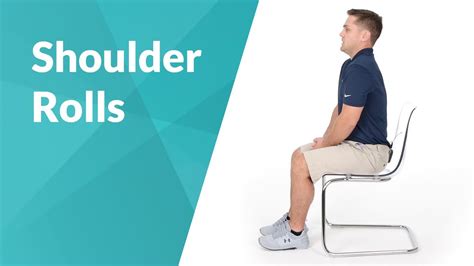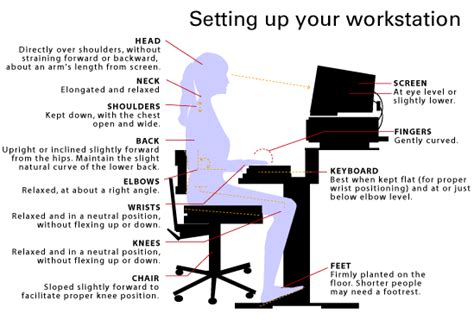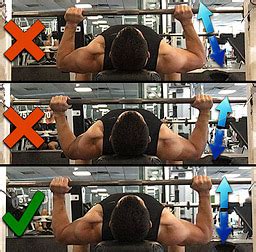In our increasingly digital world, prolonged computer use has become a staple of daily life for many. While technology brings numerous benefits, it often comes with a common side effect: a stiff and aching neck. Hours spent hunched over a keyboard, with a forward head posture, can strain the muscles and ligaments in your neck and upper back, leading to discomfort, reduced mobility, and even headaches. The good news is that simple, regular stretches can make a significant difference in alleviating and preventing this common issue.
Why Your Neck Gets Stiff at the Computer
The primary culprit behind computer-related neck stiffness is poor posture. When you sit at a desk for extended periods, it’s easy to fall into habits like craning your neck forward to view the monitor, hunching your shoulders, or rounding your upper back. This ‘forward head posture’ places immense stress on your cervical spine and the muscles supporting your head, which weighs approximately 10-12 pounds.
Additionally, remaining in a static position for too long reduces blood flow to the muscles, causing them to tighten and become fatigued. Over time, these sustained positions can lead to muscle imbalances, trigger points, and chronic pain. Understanding the cause is the first step towards effective relief and prevention.
The Importance of Regular Stretching
Incorporating regular stretching into your workday is crucial for counteracting the negative effects of prolonged sitting. Stretching helps improve flexibility, increases blood circulation to your muscles, and releases accumulated tension. It can restore range of motion, alleviate pain, and even improve your overall posture. Think of it as a reset button for your neck and shoulders, allowing your muscles to relax and lengthen.

Effective Stretches for Neck Relief
Here are several simple yet effective stretches you can perform right at your desk to ease neck stiffness:
Chin Tuck (Cervical Retraction)
This stretch targets the deep neck flexors and helps correct forward head posture. Sit tall with your back straight. Gently pull your head straight back, as if making a double chin, keeping your gaze level. Feel the stretch at the back of your neck. Hold for 5-10 seconds, then release. Repeat 10-15 times.
Neck Tilts (Ear to Shoulder)
This stretch targets the side of your neck. Sit upright and relax your shoulders. Gently lower your right ear towards your right shoulder, without shrugging your shoulder. You should feel a stretch on the left side of your neck. Hold for 20-30 seconds, then slowly return to the center. Repeat on the other side. Do 2-3 repetitions per side.

Neck Rotations (Look Over Shoulder)
This improves rotational flexibility. From a neutral sitting position, slowly turn your head to look over your right shoulder as far as comfortable. Hold for 15-20 seconds. Return to the center and repeat on the left side. Do 2-3 repetitions per side.
Upper Trapezius Stretch
This stretch targets the large muscles at the top of your shoulders and neck. Sit tall. Place your right hand under your left thigh (or gently hold the bottom of your chair with your right hand). With your left hand, gently pull your head towards your left shoulder while looking down towards your left armpit. You should feel a deep stretch on the right side of your neck and shoulder. Hold for 20-30 seconds, then switch sides. Do 2-3 repetitions per side.

Levator Scapulae Stretch
Similar to the upper trapezius stretch, but targeting a slightly different muscle. Sit tall and place your right hand on your left shoulder. Gently pull your head towards your left armpit using your left hand. Hold for 20-30 seconds, then switch sides. Do 2-3 repetitions per side.
Shoulder Rolls
This is a great way to relieve tension in your upper back and shoulders. Sit or stand with your arms relaxed at your sides. Roll your shoulders forward in a circular motion 5-10 times, then reverse and roll them backward 5-10 times. Focus on a fluid, full range of motion.

Beyond Stretches: Preventative Measures
While stretching is essential, preventing neck stiffness also requires addressing your work environment and habits:
- Ergonomic Setup: Ensure your monitor is at eye level, your chair supports your lower back, and your keyboard and mouse are within easy reach to maintain neutral wrist and arm positions.
- Take Regular Breaks: Step away from your computer every 30-60 minutes. Even a 5-minute break to walk around, grab water, or perform a few stretches can make a big difference.
- Mind Your Posture: Be conscious of your posture throughout the day. Remind yourself to sit tall, keep your shoulders relaxed, and avoid craning your neck forward.
- Strengthen Core and Back Muscles: A strong core and back muscles provide better support for your spine, reducing the strain on your neck.

When to Seek Professional Help
While these stretches and tips can provide significant relief, if your neck pain is severe, persistent, accompanied by numbness or tingling in your arms, or radiates down your back, it’s advisable to consult a healthcare professional. A physical therapist or doctor can diagnose the underlying issue and recommend a tailored treatment plan.
By integrating these simple stretches and preventative measures into your daily routine, you can effectively combat the stiff neck caused by computer use. Prioritizing your ergonomic health will not only reduce discomfort but also contribute to a more productive and pain-free work life.




